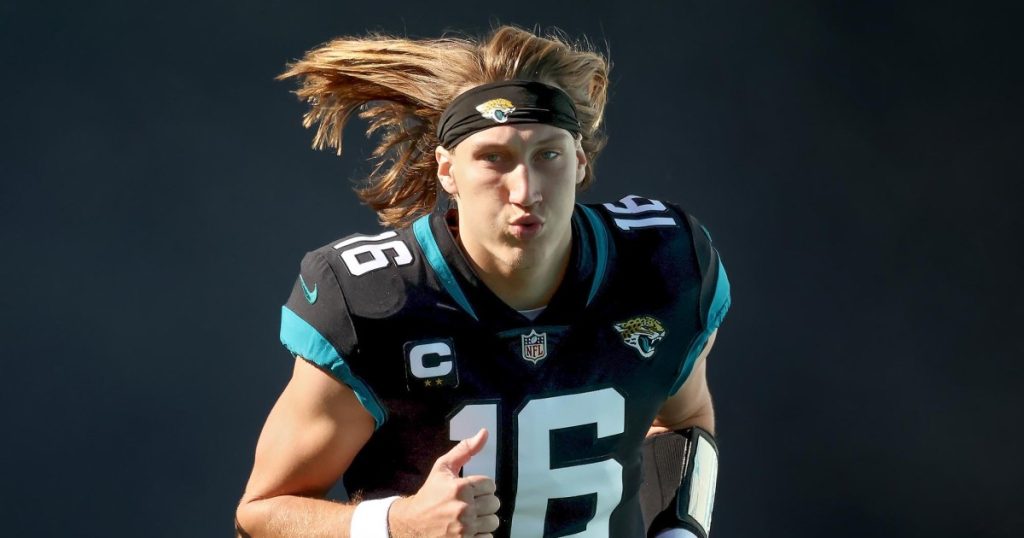On December 1, Jacksonville Jaguars quarterback Trevor Lawrence endured a significant head injury during a game against the Houston Texans when he was struck by linebacker Azeez Al-Shaair. This collision occurred as Lawrence attempted to slide, and it resulted in a concussion that prompted Al-Shaair’s ejection from the contest. The incident escalated tensions on the field, leading to multiple ejections and chaos shortly thereafter. While the NFL has not officially announced disciplinary action, a suspension for Al-Shaair is anticipated given the nature of the hit. Both current and former players, coaches, and pundits across the league have since voiced their opinions regarding the incident and its implications for player safety.
In a social media update following the incident, Lawrence expressed gratitude for the support he received while reassuring followers that he was recovering at home. He articulated appreciation for the well-wishes that poured in after the hit. Al-Shaair responded the next day, indicating that he did not intend to harm Lawrence and expressed his regret for the unfortunate outcome. He explained that he did not recognize Lawrence was sliding until it was too late, emphasizing the split-second nature of the play. Al-Shaair’s comments reflect the complexities of professional football, where players often face the challenge of navigating aggressive gameplay while trying to prevent injuries to themselves and their opponents.
Despite acknowledging the injury, Al-Shaair characterized the incident as a part of the game’s inherent risks, reaffirming his commitment to playing hard without malicious intent. He underscored that while hitting is a core part of football, his ultimate goal is the safety and well-being of all players involved. His statement highlights a common sentiment among players, who often grapple with the balance between competitive play and player safety. In the wake of the hit, reactions from the NFL community have ranged from outrage to defense, shining a spotlight on the ongoing conversation about player safety protocols and what constitutes a legitimate football play versus a reckless or “dirty” hit.
Jaguars head coach Doug Pederson described Al-Shaair’s hit as unacceptable within the league, reinforcing the need for player safety standards and the repercussions for actions that threaten it. He refrained from commenting on Lawrence’s potential return, illustrating the uncertain nature of concussion recovery in athletes. Conversely, Texans coach DeMeco Ryans emphasized that such actions do not reflect what they teach players, praising Al-Shaair’s football acumen and leadership while underlining that his actions on the field were unbecoming. Through their statements, both coaches highlighted contrasting perspectives on player accountability and the systems in place to manage player conduct during games, reflective of the broader challenges in maintaining a safe playing environment.
The fallout from the hit extended beyond the two coaching staffs, with players weighing in on the legality and ethics of the play. Jacksonville tight end Evan Engram labeled the hit a “dirty play,” justifying his reaction during the ensuing fight as an attempt to defend a teammate’s safety. Defensive end Josh Hines-Allen, while criticizing the hit, acknowledged the evolution of how such plays are viewed in the modern game. He noted that previous standards might have allowed for harder hits, but the current emphasis on player protection has clearly defined unacceptable levels of aggression. The varied responses from players demonstrate the nuanced nature of modern football, wherein camaraderie and competitive integrity are constantly being balanced.
Outspoken figures, including former quarterback Robert Griffin III, condemned the hit unequivocally, joining others such as ESPN’s Don Van Natta Jr. in calling for significant repercussions for Al-Shaair. They assert the need for stringent measures against actions deemed as threats to player safety. In contrast, former linebacker Emmanuel Acho nuanced the debate by acknowledging the play was illegal but suggesting that it might not qualify as dirty due to a lack of malicious intent. Acho’s commentary reflects the dilemma facing many in the sport: while maintaining fierce competition, players and officials face the responsibility of ensuring a safer league. This ongoing dialogue speaks volumes about the evolving landscape of football, where the stakes of player safety continue to dominate discussions among all members of the community.
As the NFL navigates these complex issues, the impact of Lawrence’s injury serves as a poignant reminder of the real risks inherent in contact sports. With ongoing conversations around safety measures, the league now has the opportunity to implement effective changes that could fundamentally reshape how the game is played. As calls for accountability and a re-examination of the rules resound within the league, it becomes imperative for both players and coaches to engage in this dialogue, ensuring that the spirit of competition does not come at the cost of athlete safety. The legacy of incidents like the one involving Trevor Lawrence is a critical touchstone in the quest for both a competitive and secure environment in the NFL, representing the delicate balance that will continue to challenge the sport.

